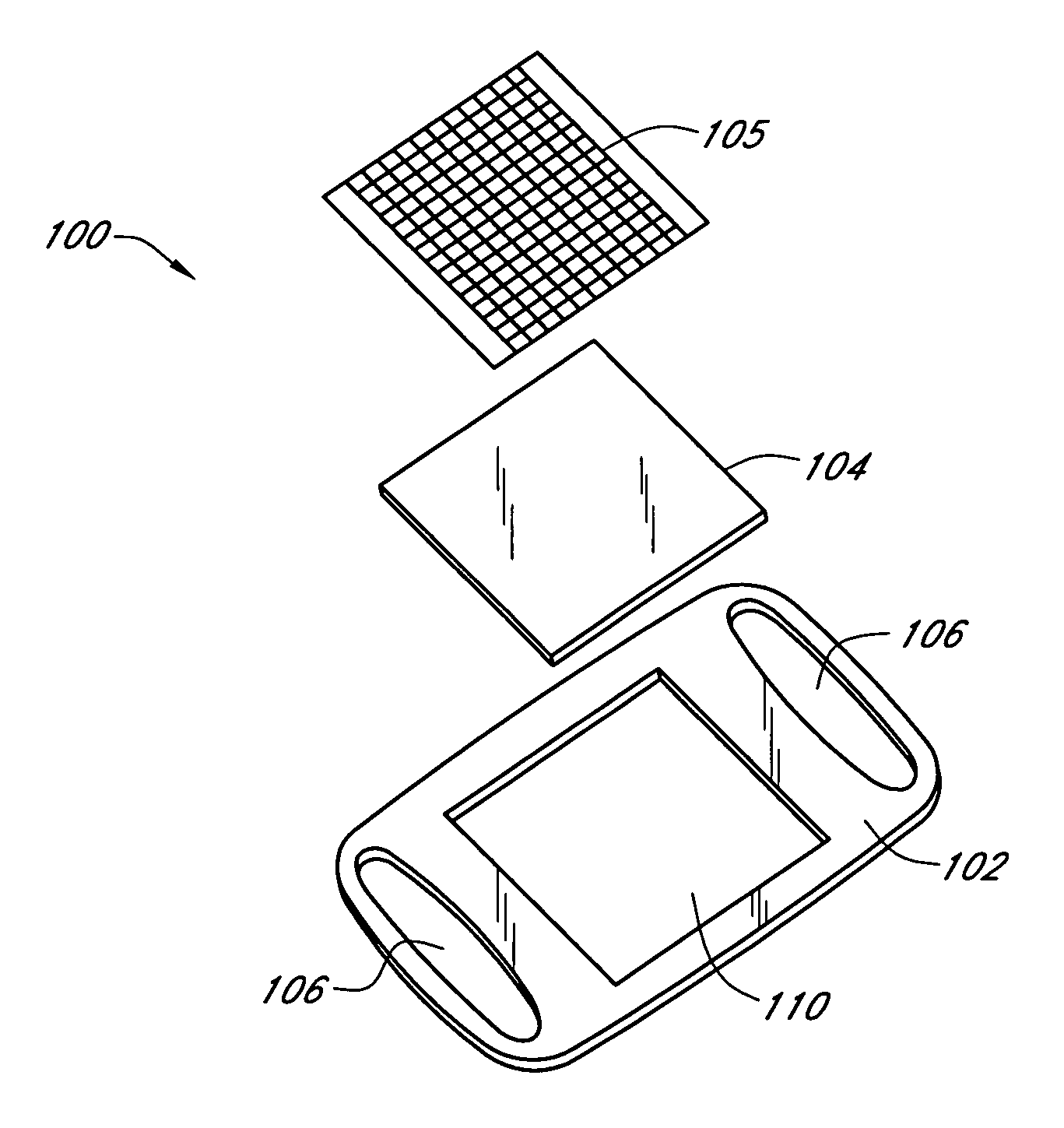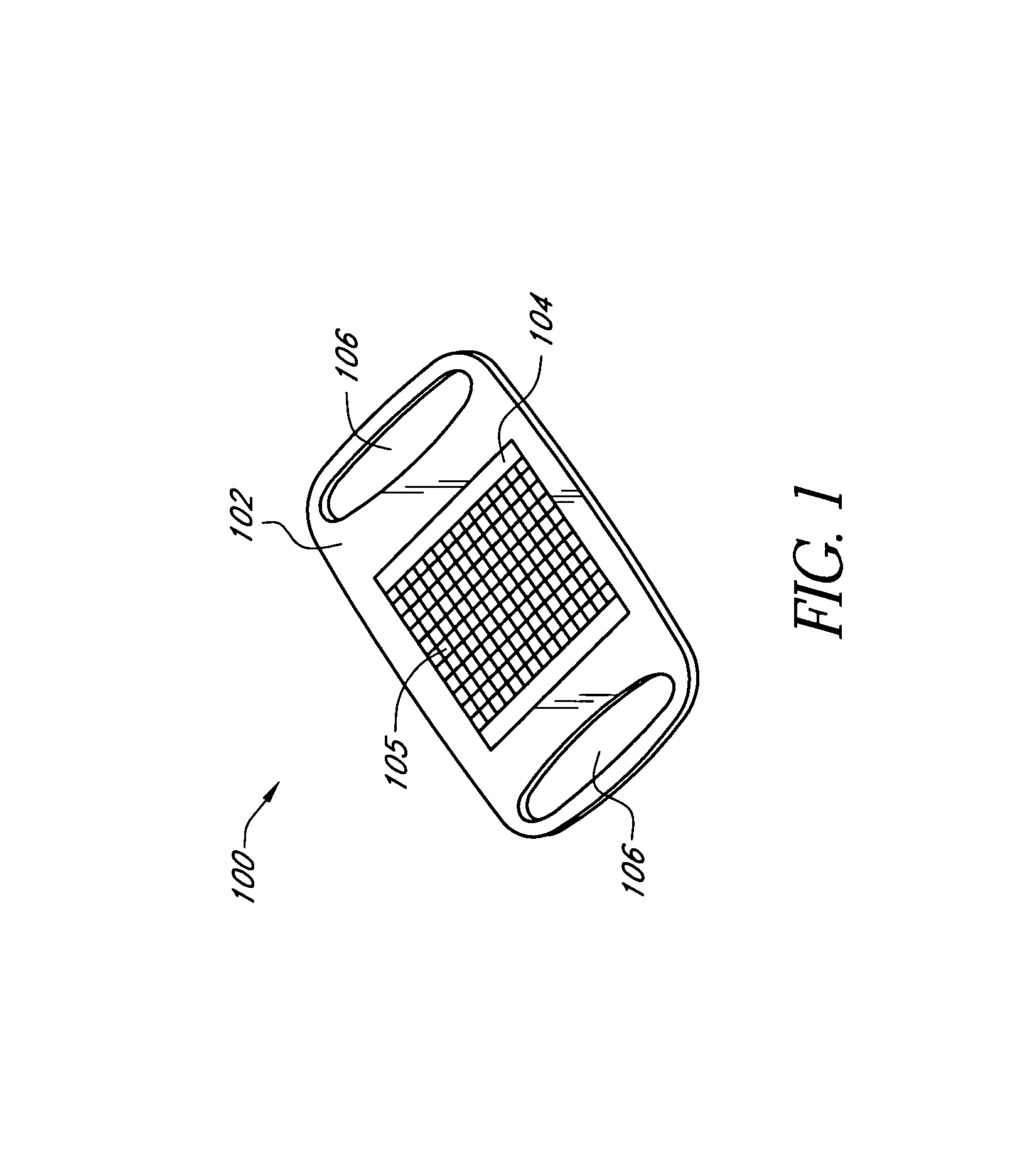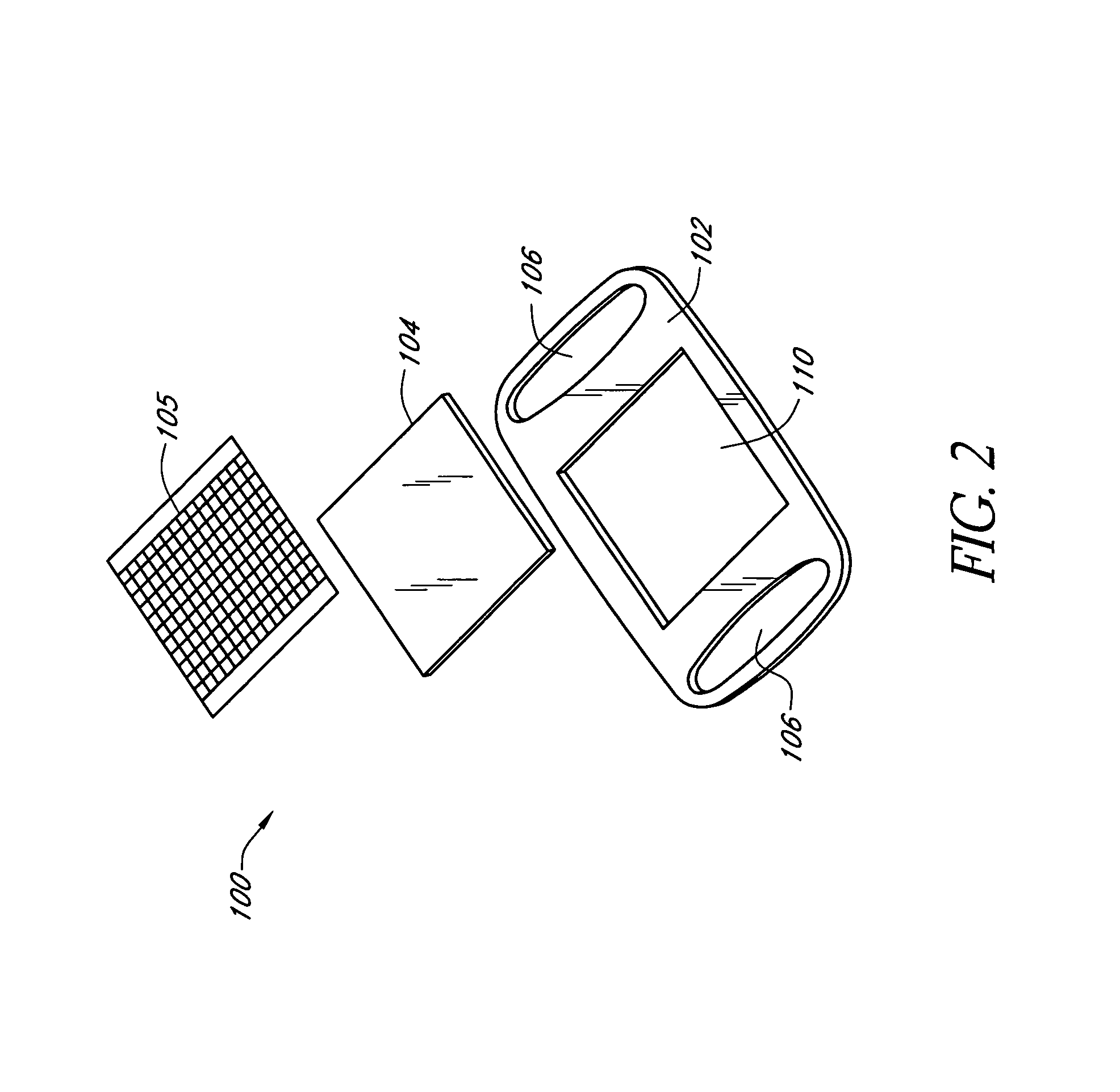Device for capturing thermal spectra from tissue
- Summary
- Abstract
- Description
- Claims
- Application Information
AI Technical Summary
Benefits of technology
Problems solved by technology
Method used
Image
Examples
Embodiment Construction
[0020]Preferred embodiments of the invention are described below. While the description sets forth various embodiments and specific details, it will be appreciated that the description is illustrative only and should not to be construed in any way as limiting the invention. Furthermore, various applications of the invention, and modifications thereof, which may occur to those skilled in the art, are also encompassed by the general concepts described below.
[0021]FIG. 1 is a perspective view of one embodiment of a wearable window 100. It is contemplated that the wearable window 100 is to be used in conjunction with a noninvasive optical measurement system such as, but not necessarily limited to, the apparatus taught in the above-mentioned U.S. Pat. No. 6,198,949. This patent discloses a noninvasive thermal gradient spectrometer comprising a window and a, thermal mass window, wherein the window forms an interface between a thermal mass window and a patient's skin. It is contemplated th...
PUM
 Login to View More
Login to View More Abstract
Description
Claims
Application Information
 Login to View More
Login to View More - R&D
- Intellectual Property
- Life Sciences
- Materials
- Tech Scout
- Unparalleled Data Quality
- Higher Quality Content
- 60% Fewer Hallucinations
Browse by: Latest US Patents, China's latest patents, Technical Efficacy Thesaurus, Application Domain, Technology Topic, Popular Technical Reports.
© 2025 PatSnap. All rights reserved.Legal|Privacy policy|Modern Slavery Act Transparency Statement|Sitemap|About US| Contact US: help@patsnap.com



